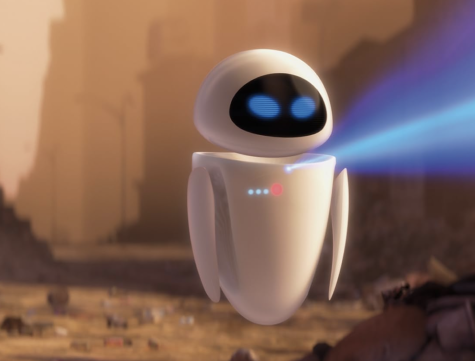Column | 15 years later, Pixar’s ‘WALL-E’ could be a window into our future
Frame from “WALL-E” (2008)
Jun 26, 2023
Fifteen years after its premiere, “WALL-E” continues to be one of Pixar’s most beloved and impactful films. The film was produced by Pixar Animation Studios and released by Walt Disney Pictures in 2008.
Championed by Andrew Stanton, a director known for his work on other successful animated projects including “Finding Nemo,” “WALL-E” was commended for its dystopian steampunk animation style and its ability to communicate a profound message without the use of dialogue.
The movie’s 98-minute runtime explores two rather opposite areas of entertainment: romance and the philosophy of technology.
The year is 2805: WALL-E, a small robot who finds himself alone on an abandoned, trash-filled earth, has only himself and a small cricket for company.
WALL-E, or Waste Allocation Load Lifter – Earth class, is a robot type designed to form blocks of trash from all the waste on the planet.
Get The Daily Illini in your inbox!

Enter EVE — the Extraterrestrial Vegetation Evaluator with a strict protocol, sent to Earth from a spaceship called the Axiom. Sleek and foreign, yet colder and sharper than WALL-E, WALL-E is quickly smitten with EVE.
The film follows the WALL-E and EVE as they travel thousands of miles from Earth to the Axiom. By this point, Earth’s population has irreparably damaged the planet and has become dependent on technological comforts.
The robots work together to bring the Axiom spaceship back to Earth after receiving evidence of life.
Scenes from the movie offer a horrifying depiction of what real Earth could look like. According to the World Bank, humanity generates over two billion tons of waste every year — and these levels are only projected to increase annually.
Frames in “WALL-E” show mountains of trash on an earth with a hardly blue sky. The film was created 15 years ago, but it could very easily foreshadow years ahead. Humanity isn’t slowing down its production of trash or pollutants.
In the film, humans are seen on levitating chairs with screens just inches from their faces. They don’t get up for anything and robots provide them food and entertainment.
With the speed of technological advancement, it isn’t hard to imagine such a reality, and with the rapid development of artificial intelligence, the personalities of robots may develop to previously unseen heights.
This does not go to say that “WALL-E” is our future by any means — but it does offer a scary possibility of what still could be.






